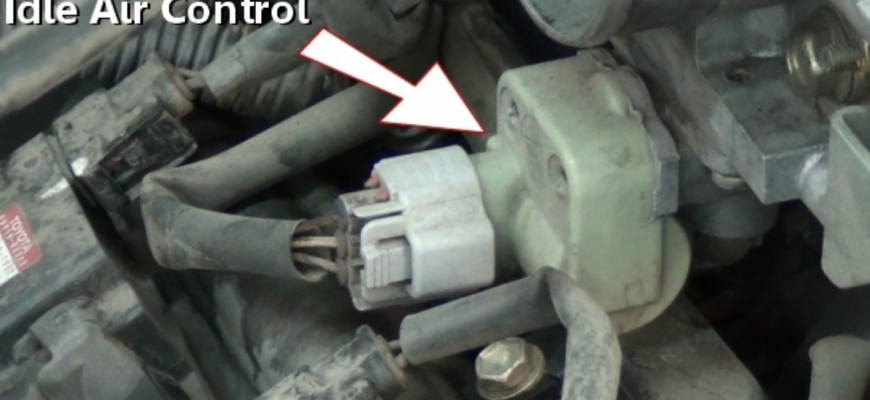The Idle Air Control (IAC) valve regulates engine speed when the throttle is closed. A failing IAC valve can cause several issues.
Symptoms of a Failing IAC Valve
- Rough Idling: Engine idles too high or low.
- Stalling: Engine stalls when stopped.
- Erratic RPM: Unstable engine speed.
- Check Engine Light: Illuminates on the dashboard.
Consequences of Failure
Ignoring a faulty IAC can lead to:
- Poor fuel economy.
- Engine damage.
- Difficulty starting.
- Increased emissions.
Replacement Cost
Replacement costs vary. The IAC valve itself ranges from $50-$200. Labor adds another $50-$150‚ making the total cost approximately $100-$350.
Diagnosis and Testing
Diagnosing an IAC valve issue often involves a few key steps. First‚ a mechanic will typically use an OBD-II scanner to check for any trouble codes related to the IAC valve or idle speed. Common codes might include P0505 (Idle Air Control System Malfunction) or similar variations. However‚ relying solely on the code isn’t always enough‚ as other issues can sometimes trigger similar codes;
Next‚ a visual inspection is crucial. The mechanic will look for any signs of damage to the IAC valve‚ such as cracks‚ corrosion‚ or loose connections. They might also check the wiring harness and connector for any breaks or shorts. Cleaning the throttle body and IAC valve can sometimes resolve minor issues caused by carbon buildup. Special carburetor cleaner or throttle body cleaner is used for this purpose.
For a more thorough diagnosis‚ the mechanic might use a multimeter to test the IAC valve’s resistance and voltage. This helps determine if the valve is receiving the correct signals from the engine control unit (ECU) and if the valve’s internal components are functioning correctly. In some cases‚ a scan tool can be used to actively control the IAC valve and observe its response‚ further confirming its functionality.
DIY vs. Professional Replacement
Replacing an IAC valve is a task that some experienced DIY mechanics can handle. The process typically involves disconnecting the negative battery terminal‚ locating the IAC valve (usually mounted on the throttle body)‚ disconnecting its electrical connector‚ and removing the old valve. The new valve is then installed‚ the connector reattached‚ and the battery reconnected.
However‚ there are potential pitfalls. Incorrect installation can damage the new valve or the throttle body. Furthermore‚ some vehicles may require the ECU to be reset or relearned after replacing the IAC valve‚ which often requires specialized diagnostic equipment. Without proper knowledge and tools‚ a DIY attempt could lead to further complications and expense.
For most vehicle owners‚ professional replacement by a qualified mechanic is the recommended route. A mechanic has the experience‚ tools‚ and expertise to diagnose the problem accurately‚ replace the IAC valve correctly‚ and ensure that the engine is running smoothly afterward. They can also perform any necessary ECU resets or relearning procedures.
Preventative Maintenance
While IAC valve failure can be unpredictable‚ some preventative maintenance can help prolong its lifespan. Regularly cleaning the throttle body‚ as recommended by the vehicle manufacturer‚ can prevent carbon buildup that can affect the IAC valve’s performance. Using high-quality fuel and following the recommended maintenance schedule for your vehicle can also contribute to overall engine health and reduce the risk of IAC valve problems.
A failing Idle Air Control valve can cause frustrating driveability issues. Recognizing the symptoms‚ understanding the potential consequences‚ and knowing the diagnosis and replacement options can help you address the problem effectively and keep your vehicle running smoothly. Whether you choose to tackle the repair yourself or seek professional assistance‚ addressing a faulty IAC valve promptly is crucial for maintaining optimal engine performance and preventing more serious problems down the road.










Thanks for including the replacement cost estimate. Good to know what to expect.
I found the information on DIY vs. professional replacement particularly helpful.
This article helped me understand why my check engine light was on. Very useful!
Excellent explanation of the consequences of ignoring a faulty IAC valve.
Great overview of IAC valve issues! Very helpful for understanding potential problems.
The diagnosis and testing section is very informative. I appreciate the detail.
The symptoms section is spot on. My car was doing exactly what
Clear and concise explanation of a complex topic. Well done!